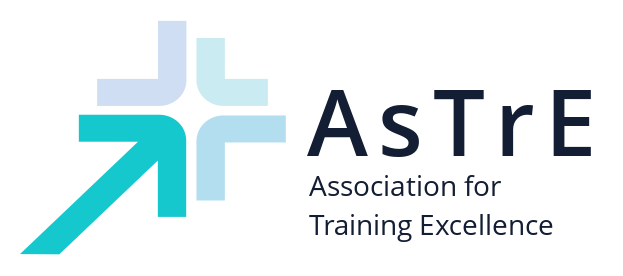
Virtual Training Hints and Tips
Many AsTrE members have been delivering virtual training for many years. As a membership organisation, we are supporting our members moving to virtual learning by sharing best practices and preparing revised standards. Based on my own experience, these are my tips for delivering high-quality virtual education.
Interactivity
As with classroom training, people prefer training that is interactive and moves along at a pace they can control, with plenty of opportunities to ask questions and discuss topics with the tutor. Many online learning environments provide fantastic tools to facilitate this interactivity. Most platforms have interactive whiteboards and chat facilities. One example I love is to cut and paste attendees comments onto the slides. Analysis risk using a probability impact grid or a power influence grid for stakeholder analysis are great exercises. For me, interactivity with the slides is a crucial feature of any on-learning environment; something I miss in a typical face-to-face course.
Taking Time To Listen to Participants
People are still getting used to working in the online environment, and as a trainer, we have to adjust to this. Just as in the classroom, some people are less inclined to contribute, especially when they can’t see who else is in the room. However, all the tools trainers use in the classroom still work. For example, asking a question and waiting for a response. Yet, we have to ask more precise questions and give people time to think and respond. In the classroom, this comes naturally; as online trainers, we need to learn to wait. One thing I find works well is questions like “define the difference between a risk and issue?” and then using the participant’s feedback to build a definition. It can take some time to relearn this skill, and it’s too tempting to jump in and fill the silence.
Have a Plan and Stick to It
Often in the classroom, I will adjust the order of the course to fit the needs of the group. However online, it is essential to stick to the schedule. Even better if you have printed materials, use this a guide to the course. People can page turn the course with you, pre-read the contents and refer to the figures and tables in the printed material. In this way, the online sessions are more of a tutorial as part of an overall learning package. Ideally matching the graphics on the screen to those in the study material means people can use the printed material as a plan for the session.
Marked Assignments
Feedback on learning is essential for virtual learning. Directed learning marked by the tutor is critical as a way of monitoring the learning. The open university has used remote assignments for many years, and it works. Giving participants work to do outside of the class and then submitting it for marking is vital for monitoring the learning. These assignments take the place of group and individual exercises. Over a typical course, I see a significant improvement in the quality of work submitted by participants. Without this feedback, it’s almost impossible to evaluate the learning. This can be incorporated into the session by quick polls and quizzes, but offline assignments are much more powerful.
Recording
A simple one, but often mentioned by participants, is the availability of session recording. Often people want to review sessions again. Providing a recording is supported by almost all platforms and enables participants to skip to the next sections. These should be available to everyone after each session.
Breaks
A typical session should last no more than 2 hours without a break. As in face-to-face training courses, the sessions need to broken into bite-size parts, interspersed with exercises and case study work. Each session should start with a review of what was learning in the last session using a fast quiz or other exercise.
These are my tips, over the next few weeks, we will be collating views from across the membership to develop an AsTrE standard for virtual learning.
